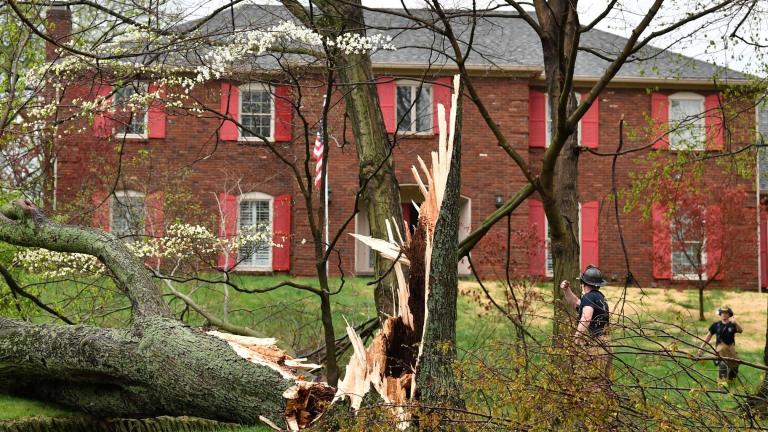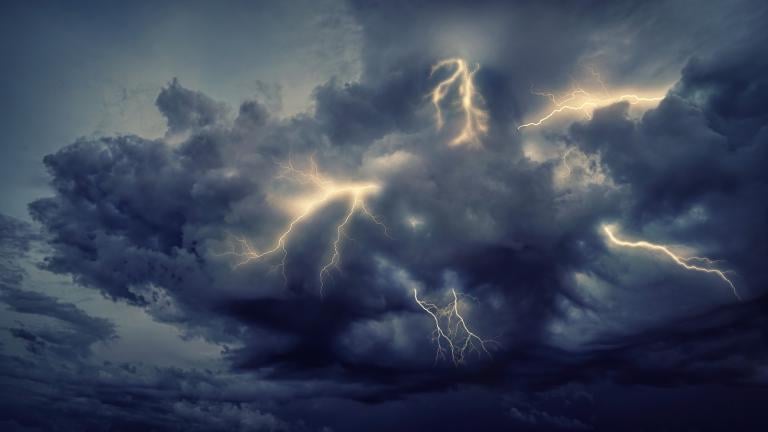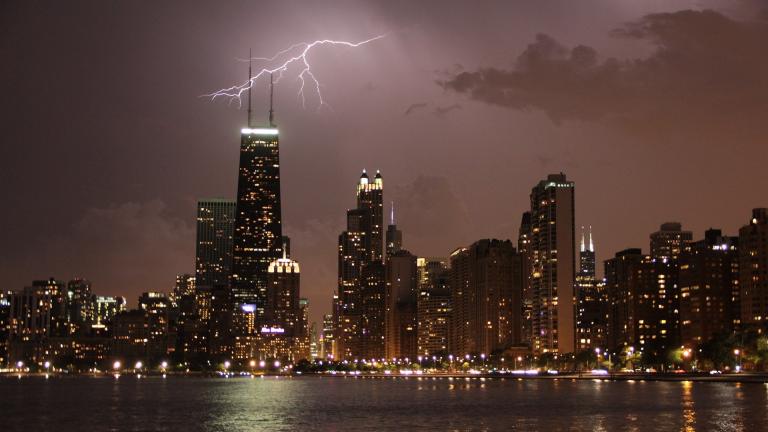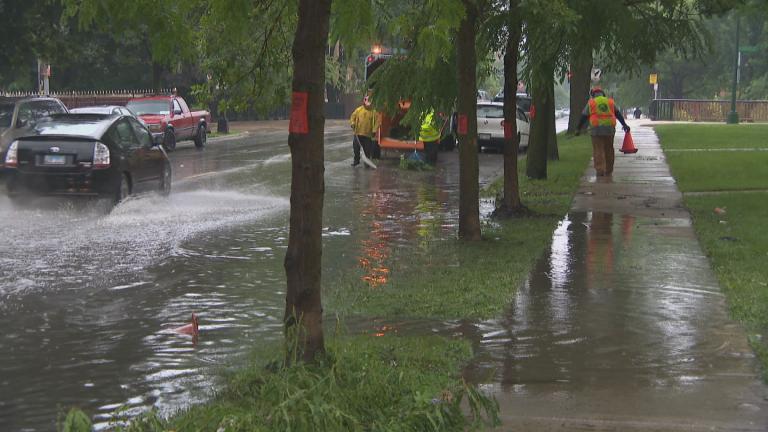Swimmers, boaters, anglers, meteorologists and aquatic researchers now have a new set of eyes continuously monitoring conditions in Lake Michigan.
On Monday, a team from Illinois-Indiana Sea Grant deployed their latest data-gathering buoy — Chicago Pier, nicknamed “Chuoy” — a mile and a quarter off Navy Pier, joining Sea Grant’s other buoys in Wilmette and Michigan City, Ind. (Despite now being a trio, Two Yellow Buoys will remain the Twitter handle, in case the buoys’ thousands of followers were wondering.)
Illinois-Indiana Sea Grant, a program co-managed by the University of Illinois and Purdue University, also oversees a pair of buoys for the National Oceanic and Atmospheric Administration; those are positioned in the lake near Waukegan and Winthrop Harbor, respectively.
But weather patterns further north often don’t match what’s occurring on the lake at its southernmost reaches, said Ben Szczygiel, aquatic ecologist and buoy specialist with Sea Grant. Adding Chuoy to the mix will fill a Chicago-sized hole in monitoring capabilities.
Like its fellow buoys, Chuoy will provide a constant stream of real-time information on solar radiation; wind speed and direction; water temperature through the entire water column, from surface to bottom; as well as wave height, direction and period. “Period” refers to the amount of time between waves, Szczygiel explained.
A camera will also capture photos and video from the solar-powered buoy at roughly the top of every hour, he said.
“These are great tools,” Szczygiel said of the buoys. “It would be nice to have one in every harbor,” though at $12,000-$15,000 a piece, the buoys don’t come cheap.
Nonprofit Sea Grant crowdsources funding for the buoys on its own initiative, he said, in order for the data to be freely available to anyone and everyone. The expense is one reason the organization asks boaters to take special care when motoring near the buoys. The Michigan City buoy once took a direct hit, requiring a costly replacement.
The buoys’ publicly accessible data can be found on Sea Grant's website or a Great Lakes-wide monitoring site maintained by the Great Lakes Observing System.
Getting this information into people’s hands, particularly swimmers and boaters, is a key component of Sea Grant’s mission, which promotes Great Lakes science literacy by combining research, education and outreach. To that end, Chuoy will help people make better informed decisions about whether it’s a safe day to hit the water off Chicago, Szczygiel said.
 Ben Szczygiel, buoy specialist with Illinois-Indian Sea Grant, anchors Chuoy to its new post. (Illinois-Indiana Sea Grant)
Ben Szczygiel, buoy specialist with Illinois-Indian Sea Grant, anchors Chuoy to its new post. (Illinois-Indiana Sea Grant)
Up until a decade ago, there was only a single buoy collecting data on Lake Michigan, anchored in the middle of the lake in the 1980s by the National Oceanic and Atmospheric Administration, said Mike Bardou, warning coordination meteorologist in the Chicago office of the National Weather Service.
Crews on board lake-going freighters were another source of weather information, he said, but that was ad hoc, not systematic, and reporting of near-shore conditions was nonexistent, leading to dangerous situations.
For example, when a strong north-south wind blows across Lake Michigan, waves have the entire length of the lake to gain height (this is known as “fetch”). A mid-lake buoy might report one-foot waves, but at the southern end, home to some 12 million people, waves could be approaching 15 feet.
Now, when the weather service issues a beach warning or small craft advisory for Chicago, images from Chuoy can help drive the point home.
“We can talk about big waves but that ‘water truth’ will help paint a picture,” said Bardou.
The “wave period” data point is another piece of information that could benefit swimmers in particular. Lake Michigan alone typically accounts for half of all Great Lakes drownings annually, as many as all the other lakes combined, according to the Great Lakes Surf Rescue Project. Statistics show that most of those drownings occur not when waves are at their highest, but when they’re in the 3- to 6-foot range.
“That’s big, but not ‘scary’ big. People think, ‘I can handle that,’” said Ricky Castro, meteorologist in the Chicago National Weather Service office.
But what makes Lake Michigan waves so deadly isn’t so much the height as it is the period, or timing, with swells coming one after the other in rapid, pummeling succession. That’s a unique aspect of the lake people aren’t as aware of, and it’s what winds up overwhelming swimmers, Castro said.
As it monitors current conditions, Chuoy is also establishing a historic record of Chicago’s near-shore waters.
Bardou said this could be helpful in predicting things like the point at which lake waves will crash over barriers onto DuSable Lake Shore Drive or shoreline homes. “If nothing else, it gives us a threshold going forward of what conditions, like the wind speeds or wind direction, led to this outcome,” he said.
The buoy’s data will have applications outside of meteorology.
Austin Happel, a biologist at the Shedd Aquarium, popped over to Burnham Harbor for Chuoy’s launch and is already dreaming up ways in which the buoy can contribute to his research on urban waterways.
“The buoys collect temperature data, which is a driving factor of how fish behave — when fish spawn, how much they eat,” Happel said. “In the future, I'm hoping to link into this data more to track fish, where they go and how that changes over seasons. At what temperatures do they show up? How do they act when storms come through?”
Chuoy will be in place, weather depending, through late October or early November.
Note: This story was originally published May 4. It has been updated to include our “Chicago Tonight” conversation.
Contact Patty Wetli: @pattywetli | (773) 509-5623 | [email protected]








